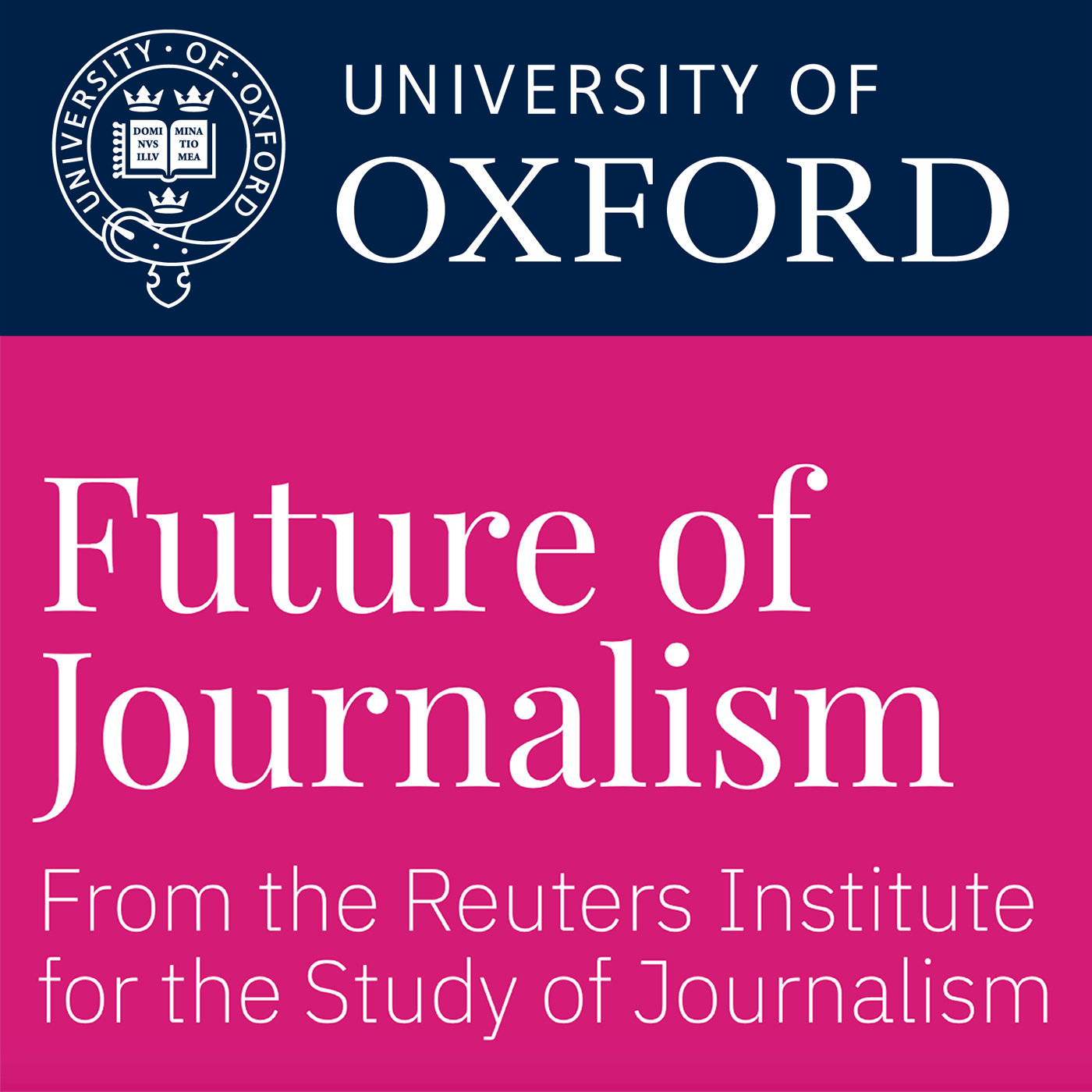

Reuters Institute for the Study of Journalism
Oxford University
The Reuters Institute for the Study of Journalism is Oxford University's international research centre in the comparative study of news media.
Episodes
Mentioned books

Oct 15, 2015 • 54min
How journalism faces a second wave of disruption from technology and changing audience behaviour
Nic Newman, digital media strategist and research associate, Reuters Institute for the Study of Journalism, gives a talk for the Reuters Institute seminar series. Introduction by James Painter and Richard Sambrook.

Aug 5, 2015 • 41min
Innovators in Digital News Panel Discussion
Lucy Küng (RISJ) presented key findings followed by a panel discussion including; Aron Pilhofer (Executive Editor of Digital, the Guardian); James Lamont (Managing Editor, Financial Times) and Kevin Sutcliffe (Head of News Programming EU, VICE News)

Jun 12, 2015 • 41min
Cross-border journalism – a new method of collaborative reporting
A Reuters podcast given by Brigitte Alfter, journalist, lecturer and author of handbook on cross-border journalism.

Jun 4, 2015 • 26min
How to make serious magazine journalism pay
Bronwen Maddox (editor, Prospect magazine) delivers a talk for the Reuters Institute Business and Practice of Journalism seminar series.

May 28, 2015 • 30min
Making News for Young Adults?
A Reuters podcast given by by Anna Doble, assistant editor, Newsbeat, BBC Radio 1.

May 21, 2015 • 39min
News in the digital age, and how The Economist fits in
Tom Standage – Digital Editor, The Economist, spoke at the Business and Practice of Journalism seminar on Wednesday 7 May 2014. “We’re the view from the moon.” That’s The Economist’s biggest selling point, according to Digital Editor Tom Standage. He said the increasing demand for a less parochial serving of news is what sets his ‘newspaper’ apart in a crowded global market. “We’re for aliens that speak English,” he laughed.
After studying engineering and computer science at Oxford University, Standage began his career as a freelance technology writer before joining The Guardian as it was setting up its first website. “I wrote a script to render the headlines in the right font, because I wanted it to look and feel like The Guardian,” he said. From there he wrote for the Daily Telegraph before joining The Economist as a science writer, business editor, and eventually Digital Editor.
Standage says being global and being a weekly has allowed The Economist to make a relatively seamless transition to the web. Their 1.6 million subscribers ensure they’re profitable; the company posted an operating profit of £68 million last year.
The Economist’s digital strategy is neither to push nor prevent traditional print readers from migrating to their digital offer. “We’re agnostic about whether they take print or digital in their subscription. It’s just ‘you decide’,” he said. Most revenue comes from subscribers and not ads. “We’ll take the print-advertising money while it’s there, but our success is not predicated on ads,” he explained.
Standage points to several digital innovations as hallmarks of The Economist’s success online. “Our Daily Charts blog includes quite jolly charts on both serious issues and things like which country has had the most plastic surgery (http://www.economist.com/blogs/graphicdetail/2012/04/daily-chart-13). “We shouldn’t be a brand that does well on social media but these charts are working very well for us.”
The other innovation Standage is proud of is The Economist’s “essays” including one on democracy (http://www.economist.com/news/essays/21596796-democracy-was-most-successful-political-idea-20th-century-why-has-it-run-trouble-and-what-can-be-do). These are long-form interactive essays with embedded pictures, graphs, and charts. He says unlike The New York Times which had many journalists and developers working for months on their famed Snowfall presentation (http://www.nytimes.com/projects/2012/snow-fall/#/?part=tunnel-creek) or The Guardian with Firestorm (http://www.theguardian.com/world/interactive/2013/may/26/firestorm-bushfire-dunalley-holmes-family), The Economist prefers to turn out shorter presentations more often.
Standage was critical of media companies such as The Atlantic, Quartz, and BuzzFeed which use native ads with a similar look and feel to editorial content. He said The Economist labels their ads and places them in a separate area of the website to general content. The Economist does have blogs that are sponsored (such as the one sponsored by GE) but Standage insists readers do realise the content is still independent of GE and written by a journalist.
Video continues to be a challenge for The Economist and Standage admitted most of their “abstract, complex ideas don’t lend themselves to video treatments.” He also stressed that transparency is more important than objectivity. “You can be as biased as you like as long as you tell people your biases,” he said. “We were founded in 1843 to campaign for free trade, and we always tell you where we’re coming from.”

May 14, 2015 • 18min
The battle for authenticity- the future of news, current affairs and documentary
Kevin Sutcliffe, Head of News Programmes for Europe, Vice News, gives a talk for the Reuters Seminar Series.

May 8, 2015 • 32min
The spread of news in the age of social media
RISJ seminar by Jonathan Bright, research fellow, Oxford Internet Institute.

May 7, 2015 • 30min
New publishing models for a modern world: a legacy brand re-invents itself
Reuters Institute Business and Practice of Journalism seminar by Laurie Benson, Chief Executive of Upnexxt. We apologise for the interference in this recording.

Mar 12, 2015 • 41min
Creativity and Change in public service broadcasting - managing the tough times
Helen Boaden (Director, Radio, BBC) gives a talk for the Reuters Institute.


